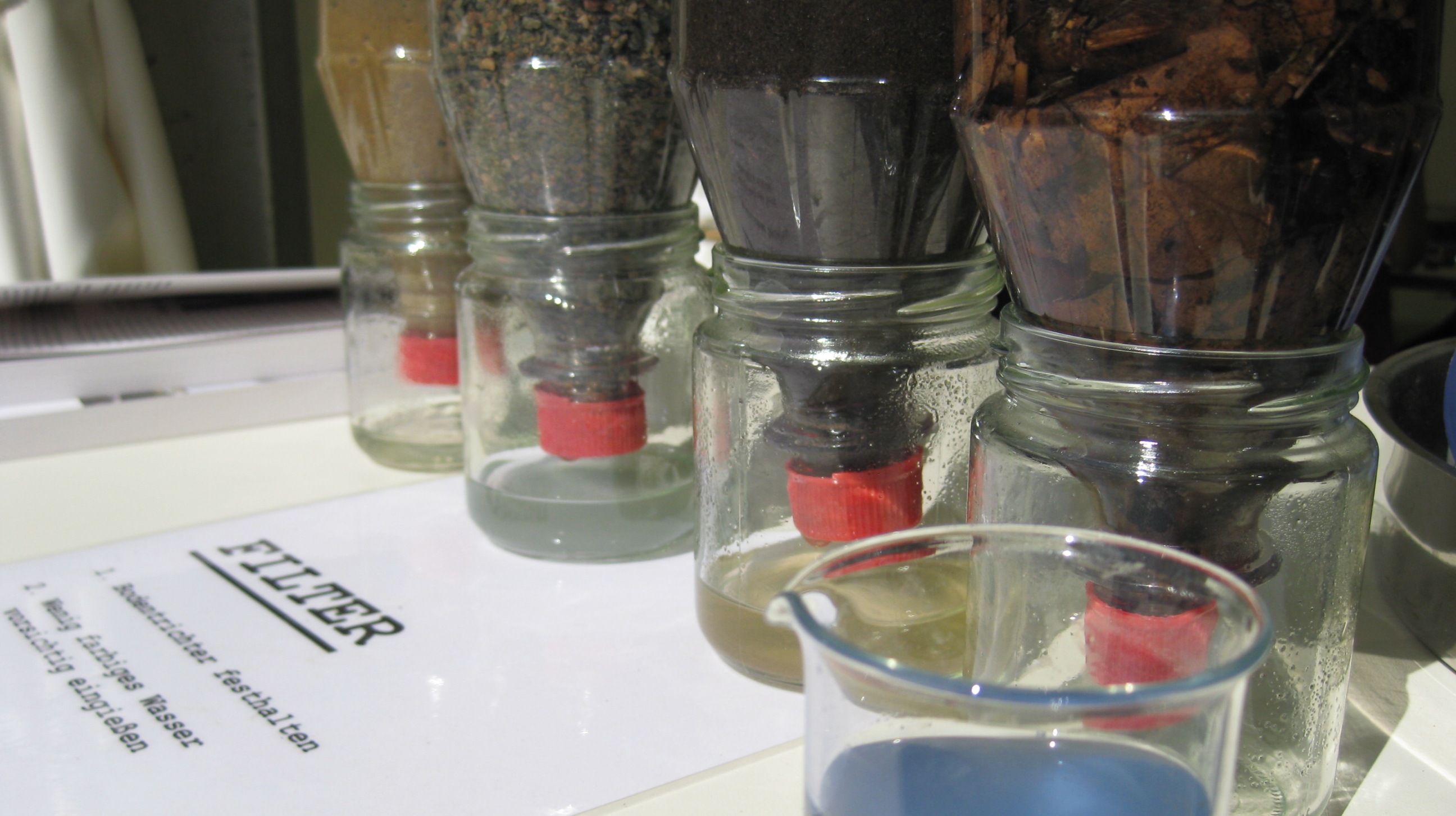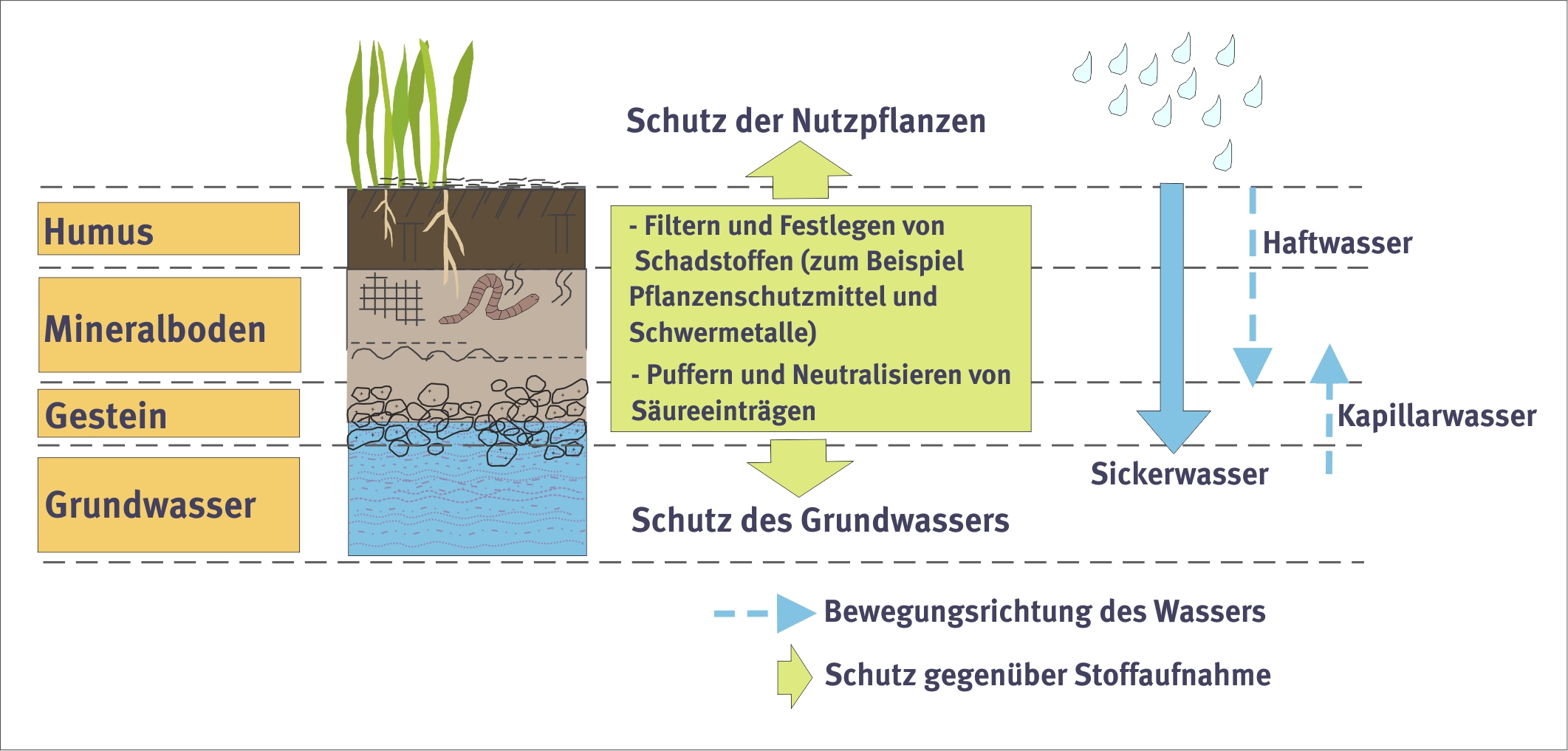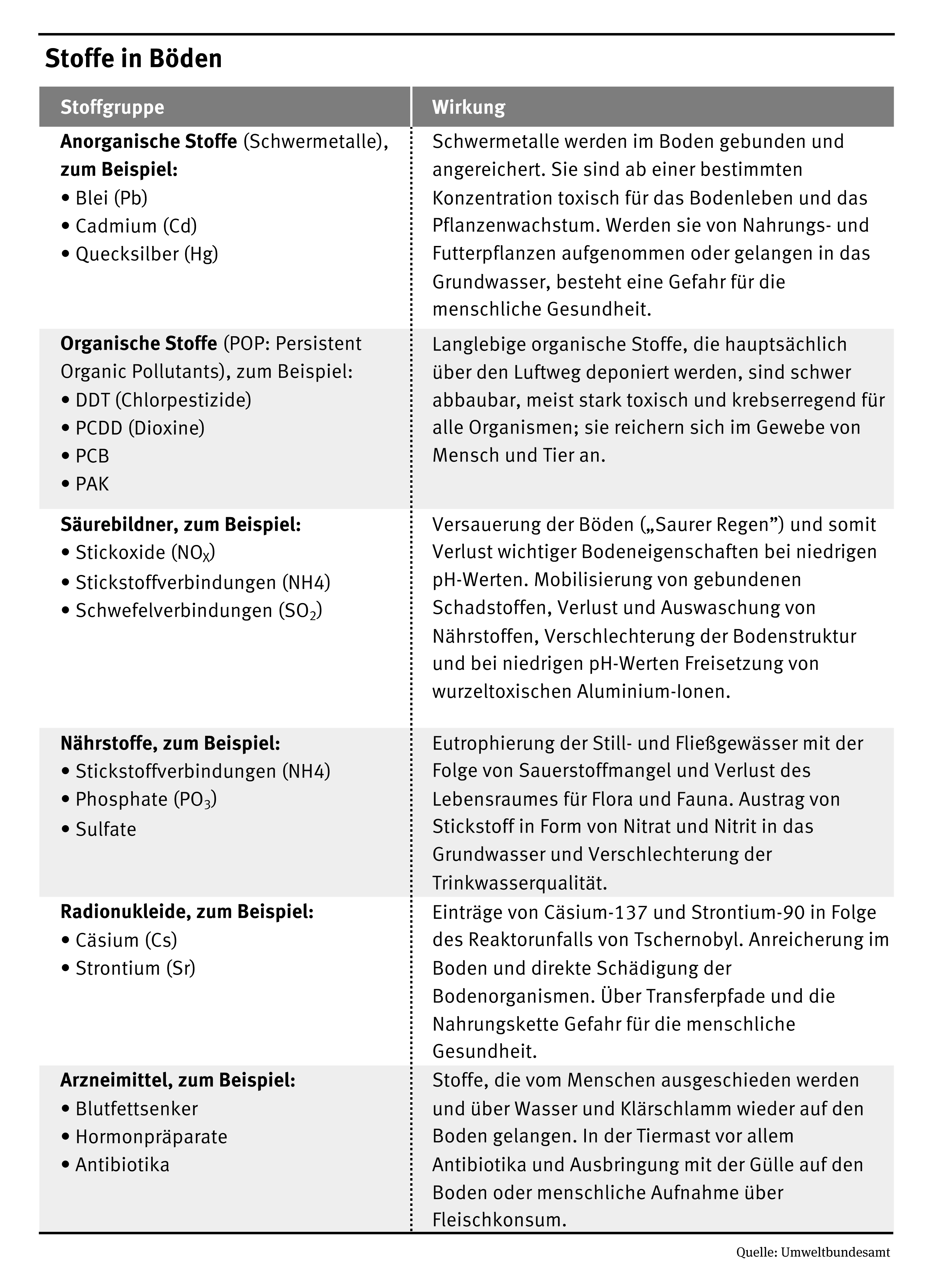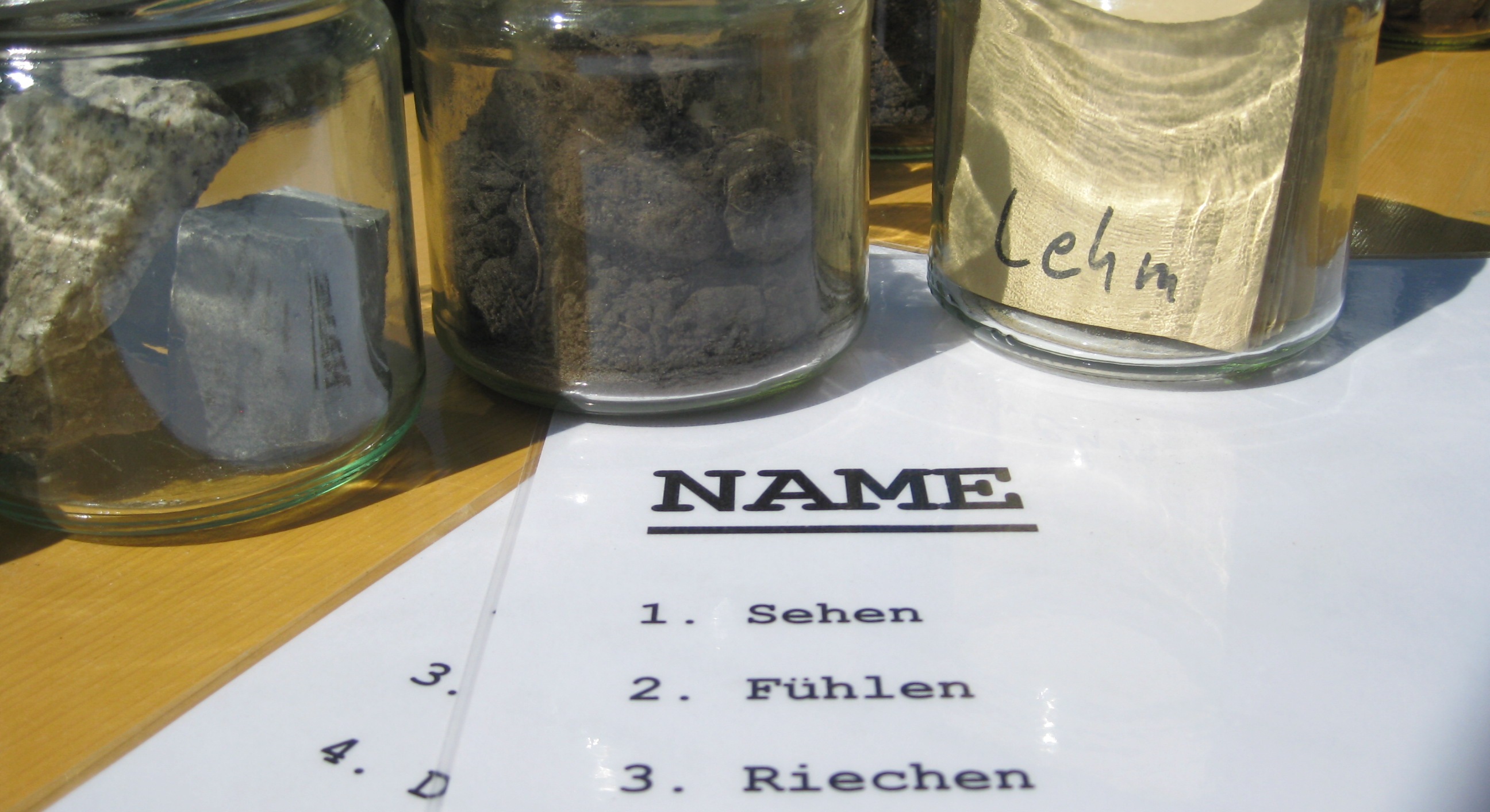Pollutants in the soil
A pollutant is a chemical or other substance whose properties and concentrations are potentially hazardous to the environment and/or human health. Soil can be polluted by natural substances such as the minerals contained in the rock from which soil is formed that are released due to weathering. For example, ore mineral deposits in near-surface soils (mineralization) induced by weathering can result in elevated concentrations of natural pollutants, as can forest fires and volcanoes. Added to this are anthropogenic pollutants from factories, mining, transportation and households. Pollutants are also deposited in the soil as the result of agricultural fertilizer and pesticide use.
The filtering and buffering capacity of soils makes them a pollution sink that prevents pollutants from seeping into the groundwater or being uptaken by plants. In the filtering process, pollutants are filtered out of percolation water and are bound by clay minerals or iron oxide in the soil. As for buffering, it neutralizes acidifying sulfur and nitrogen deposits, thus preventing eutrophication and a long term pH decrease – assuming of course that the soil’s capacity in this regard is not exhausted.
But the extent to which pollutants can be deposited and bound is determined by soil storage capacity. Once the soil’s filtering and buffering capacity is exceeded, the soil releases the stored pollutants, which end up in the groundwater or are uptaken by plants – and thus enter the food chain.
The main soil pollutant groups are as follows: heavy metals and arsenic; organic substances and organic compounds; residues of non-biodegradable pesticides, pharmaceuticals and radionucleides.

Soils filter pollutants and can clean water - but they have limits.
Source: S. Marahrens / Umweltbundesamt

Soils filter and neutralize all sorts of pollutants. Humans and nature benefit from it.
Source: S. Marahrens / Umweltbundesamt

Soil-relevant pollutant groups
Source: Umweltbundesamt





